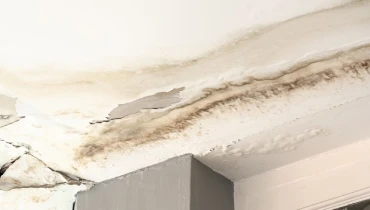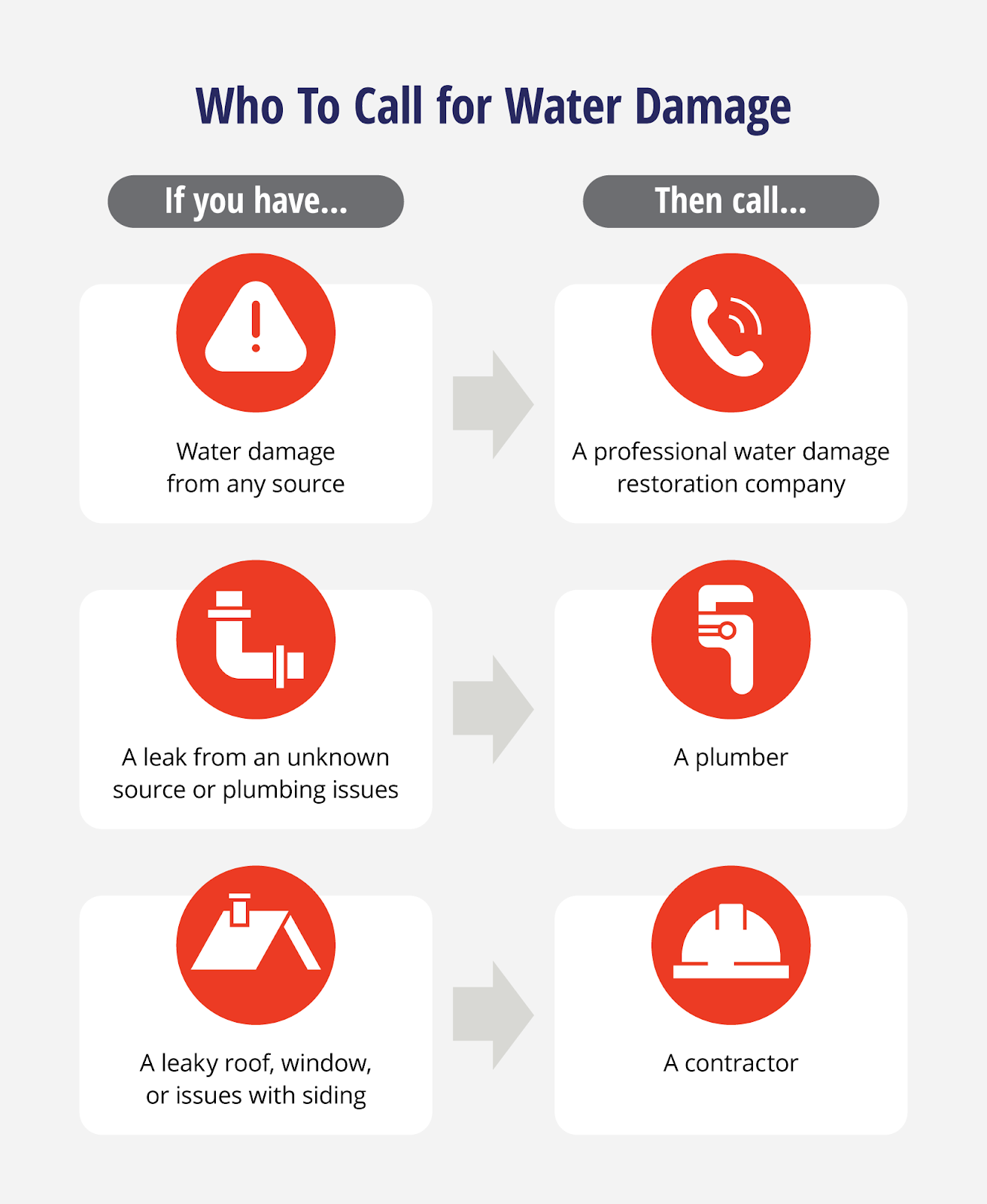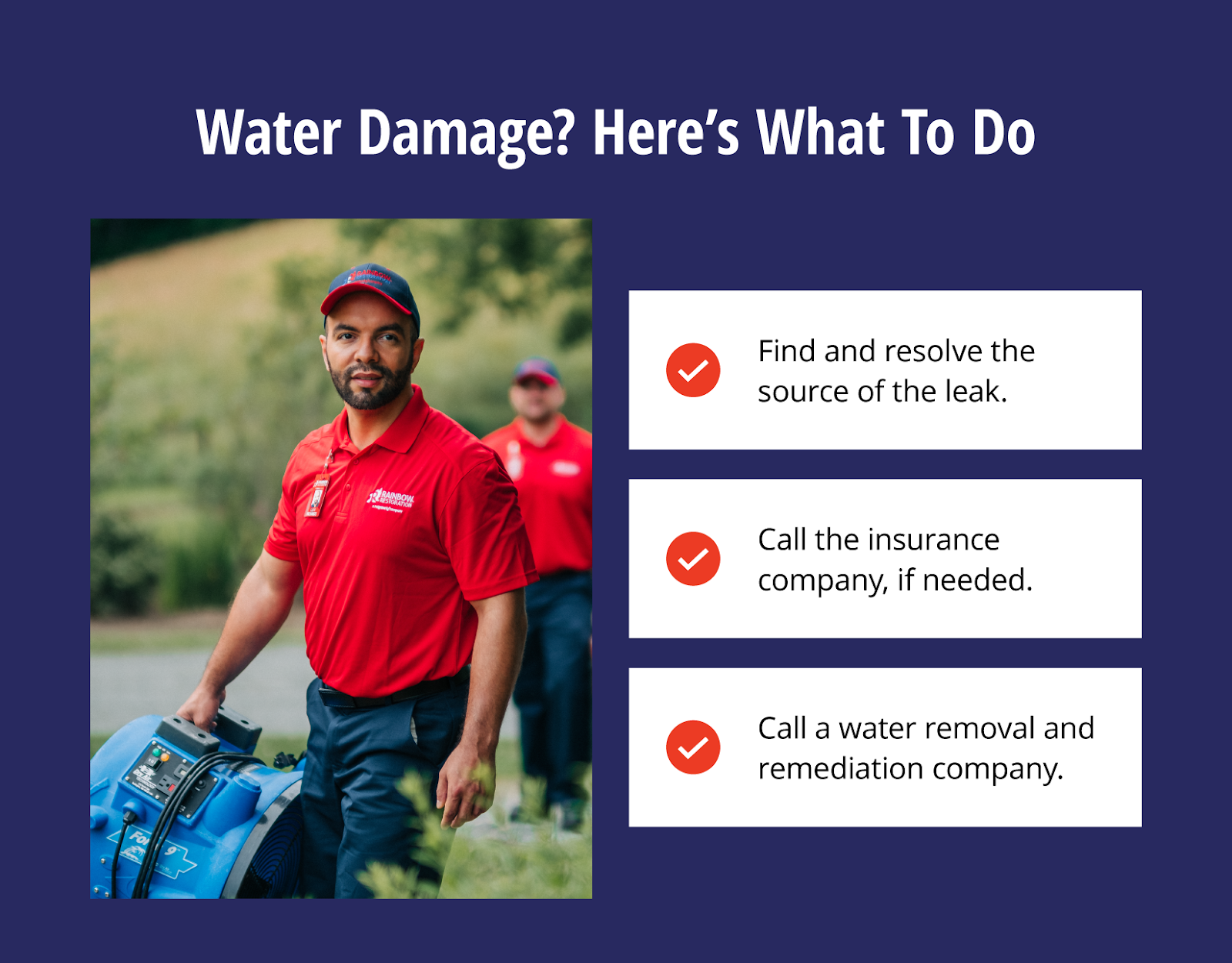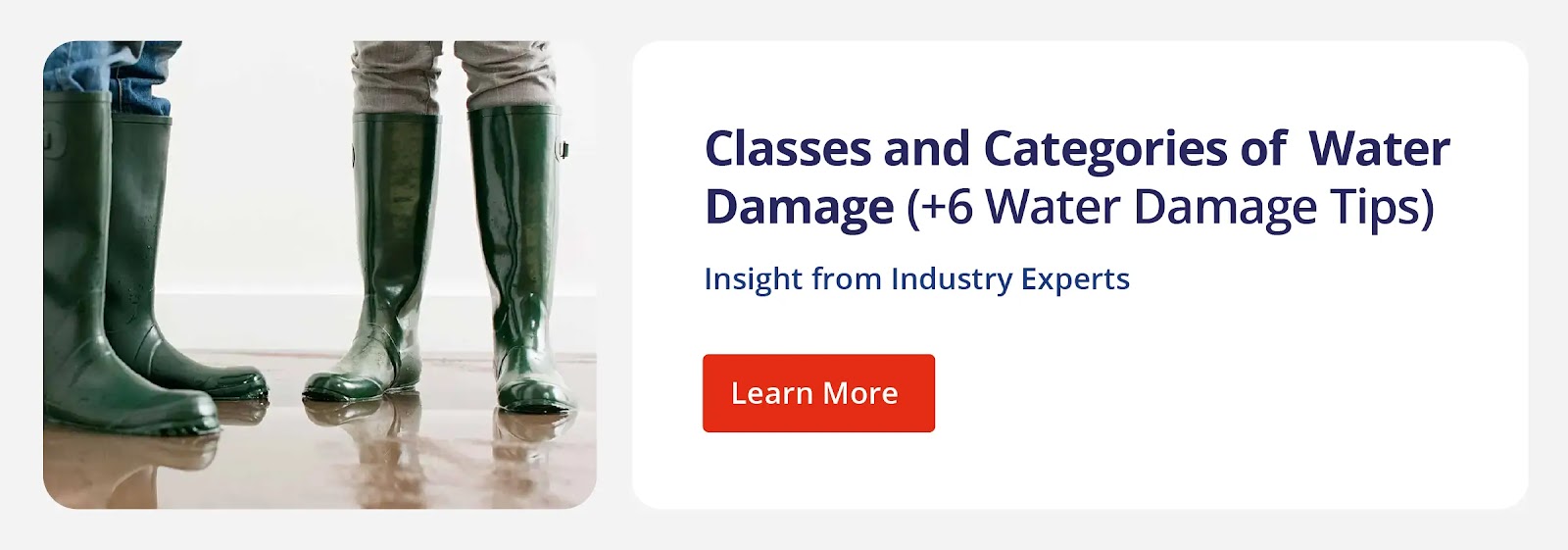
When facing water damage, prompt action is crucial. Rainbow Restoration outlines some essential steps and contacts for effective water damage response:
|
|
Quick answer: If a disaster hits a property, call Rainbow Restoration® for immediate water damage remediation and restoration services. |
Whether a property houses a family or a local business, it’s important to protect its structural integrity to keep occupants safe. In the United States, water damage is cited in 24% of home insurance claims. With this issue being so common, it’s valuable to know who to call for water damage.
Whether the damage comes from storms, plumbing issues, or leaks, hire a professional restoration company to mitigate damage and restore the property. They’ll know what to do when damage is found and expert tips to prevent it from occurring at all.
Table of contents:
- Who To Call for Water Damage
- 3 Steps to Take Once There’s Water Damage
- 7 Telltale Signs of Water Damage To Watch Out For
- Call Rainbow Restoration for Water Damage Restoration
- FAQ About Who To Call for Water Damage
Who To Call for Water Damage
There are different types of water damage with different severities and risks. For example, water damage in a house from a septic tank issue requires a different approach than a leaky roof. That’s why it’s so important to hire a professional — a blanket solution isn’t enough. For common water damage situations, always call a qualified expert who adheres to industry standards for the best results.
Water damage restoration company
In any water damage situation, call a professional restoration company. Mold develops quickly and unchecked water damage can damage a building’s structure, making it uninhabitable. It’s difficult to effectively dry property without the proper tools and experience and DIY solutions can make water damage issues worse, with risks like chemical damage from user error or mold growth.
Rainbow Restoration service professionals have the experience to eliminate water damage, perform mold removal and remediation, and restore property to the best possible condition. Without professional restoration, there’s a risk of further property damage or health hazards.
Plumber
If there’s leak damage from an unknown source or issues with aging plumbing, call a plumber to resolve the root cause of the water damage. Once the source of the water damage is eliminated such as replacing a burst pipe, a professional restoration company can effectively work on the property.
Contractor
If a property has water damage from a leaky roof, window, or siding issue, a contractor can repair the problem and stop the progression of water damage. If there’s uncertainty about where the water damage is coming from, a general contractor can help find the source of the issue and repair it or recommend a specialist.
Once the source of water damage is fixed, professional restoration services can dry and restore the property for lasting results.

3 Steps To Take Once There’s Water Damage
Once suspicions about water damage are confirmed, take these steps to start the remediation process:
- Find and resolve the source of the leak: If it’s safe to do so, the first step is to stop the source of the leak, such as shutting off the water main. If there’s an immediate emergency, such as electrical wiring in water, call 911.
- Call the insurance company: If the water damage is from a covered peril, take photos of the damage and file a claim with the insurance company. Rainbow Restoration's service professionals will gather evidence to make this easier during the water removal and remediation.
- Call a water removal and remediation company: Always hire professional services to fix any water damage. This emergency service needs to be done professionally to ensure the property is completely dried and inspected for issues like mold. Some property, such as furniture, might seem okay but must be removed if it’s not salvageable. It takes professional experience to make the right choices.

7 Telltale Signs of Water Damage To Watch Out For
Water damage can be tough to spot. Some of the most common warning signs a building might have water damage include:
- Sagging ceiling tiles: Wet ceiling tiles may lose their shape and sag downward as water accumulates.
- Discolored patches on walls or ceiling: Leaks in a ceiling or wall can create rings of mold, or mineral deposits that create discolored spots.
- Bubbling or peeling paint: If paint captures or absorbs moisture, it can bubble underneath the paint or create peeling.
- Persistent mold: If certain spots have persistent mold, it means there’s moisture exposure that needs to be resolved.
- Musty odors: If water accumulates or materials in a building are damp from a persistent water source, the property may smell stale or musty.
- Warped floors: Moisture gets absorbed if wood is consistently exposed to water. Wooden floors show water damage because it causes the wood to expand and warp.
- Climbing water bills: Some leaks might be hidden or difficult to spot. Unexplained increased water bills are a sign to investigate a property for leaks.
Call Rainbow Restoration for Water Damage Restoration
If there’s flood damage, a leak, or another issue, figuring out who to call for water damage is the first step. DIY attempts can leave water trapped in a property and create even more destruction over time.
For water damage restoration done right, call Rainbow Restoration.
This article is intended for general informational purposes only and may not be applicable to every situation. You are responsible for determining the proper course of action for your home and property. Rainbow Restoration is not responsible for any damages that occur as a result of this blog content or your actions. For the most accurate guidance, contact the Rainbow Restoration location nearest you for a comprehensive, on-site assessment.
FAQ About Who To Call for Water Damage
Setting the highest standards in water, fire, and mold damage restoration requires a continuous focus and dedication to education and improvement. This commitment to exceptional service also includes using our years of experience and expertise to answer your restoration questions.
Here are answers to some of the most frequently asked questions about who to call for water damage.
How do you prove water damage?
Property owners typically prove water damage to insurance companies by providing photos of the damage. Rainbow Restoration’s water damage remediation services take care of this step before leak damage repair.
What do you do after a leak in your house?
If there’s a leak or water damage in a house, the first step is to stop the leak so water doesn’t continue to accumulate. Once the leak is stopped, hire professional water removal and restoration to ensure the property is completely dried and all damaged materials are removed.
Who pays for a water leak?
If a water leak happens because of a covered peril, homeowners insurance or other property insurance should cover it. If not, the property owner will pay for it. Contact the insurance provider to learn what’s covered.
Who do you call for a water leak in the yard?
If there’s a water leak in a yard, it’s probably an issue with the septic tank. Call a septic tank service provider for repair and then immediately call Rainbow Restoration for biohazard cleanup to remove any hazardous material.
Who do you call for a water leak in the wall?
If there’s a water leak in the wall, call a plumber to find and stop the source. After that, call water damage restoration specialists to ensure any affected walls or ceilings are properly cleaned and dried.
How long do you dry out walls after water damage?
After water damage, walls need to dry out for several days. Depending on the extent of the damage, it can take up to five days. In some cases, fixing water damage in a wall isn’t possible and the drywall must be replaced. Contact a professional for their expert opinion.

